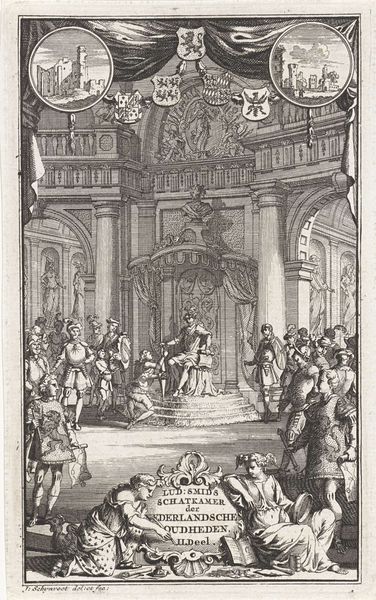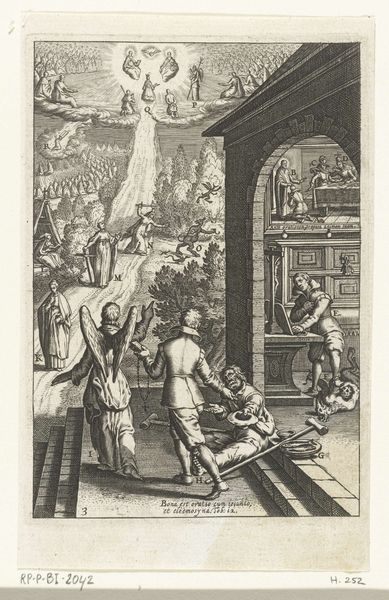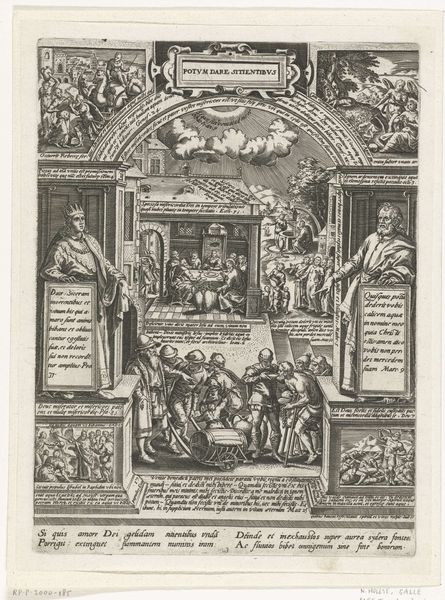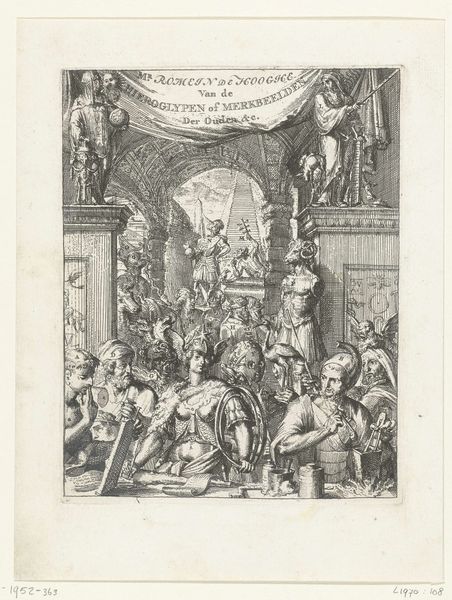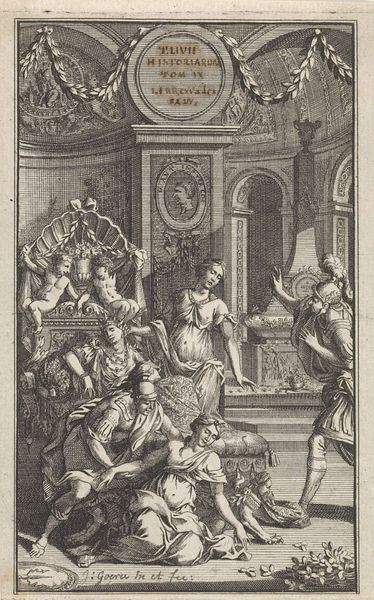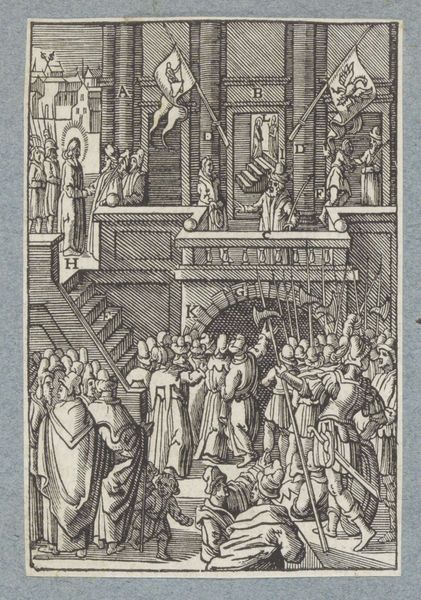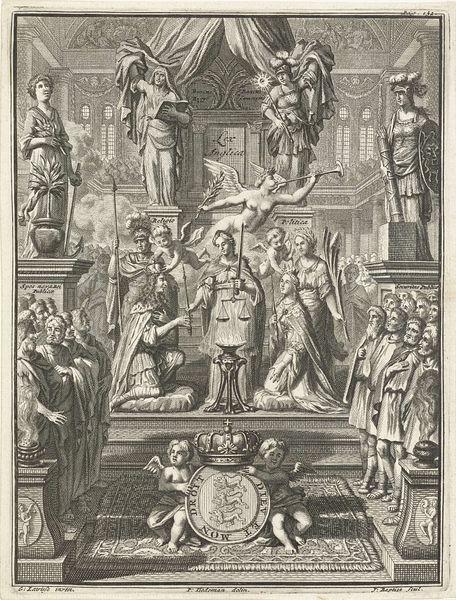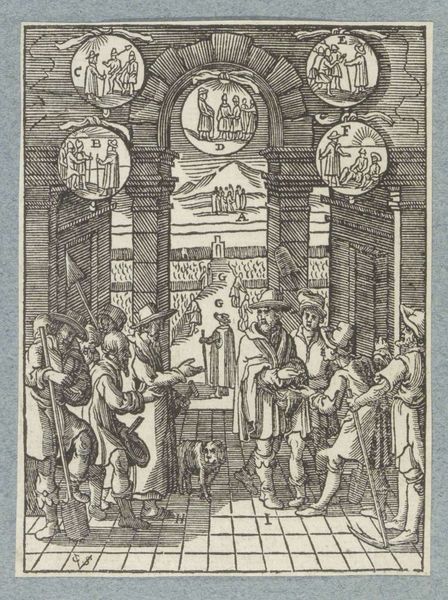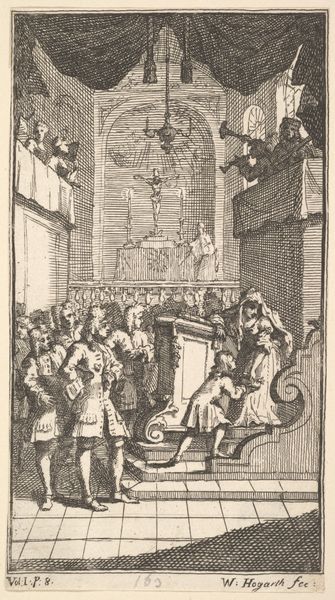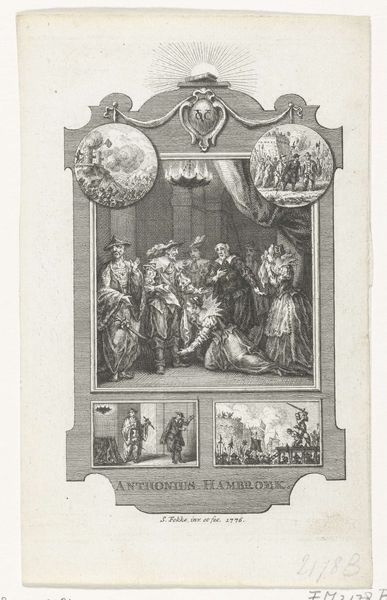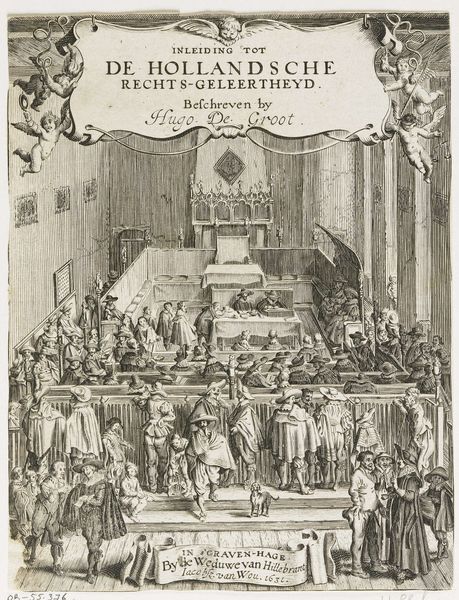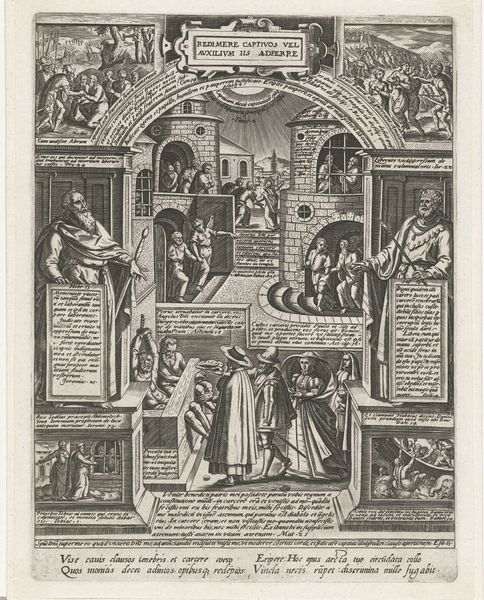
print, engraving
#
baroque
# print
#
pen illustration
#
old engraving style
#
history-painting
#
engraving
Dimensions: height 319 mm, width 202 mm
Copyright: Rijks Museum: Open Domain
This print, made around the turn of the 18th century by an anonymous Dutch artist, depicts the pillaging of a church, supposedly by Louis XIV. The image creates meaning through pointed visual codes, cultural references and historical associations. Made in the Netherlands during a period of intense conflict with France, it suggests that the supposedly Christian king is little more than a common thief. The print includes a portrait of Louis, flanked by allegorical figures of Justice and Death, implying that his actions are both unjust and ultimately futile. Below, soldiers are shown ransacking a church, while monks and other religious figures cower in fear. The text at the bottom of the print reinforces this message, accusing Louis of using the stolen gold to fund his wars against the Turks. This work is clearly not a neutral record of events, but a piece of propaganda designed to stoke anti-French sentiment. To fully understand the print, we might turn to sources such as political pamphlets, diplomatic correspondence, and military histories. Art like this reminds us that its meaning is always contingent on its social and institutional context.
Comments
No comments
Be the first to comment and join the conversation on the ultimate creative platform.
